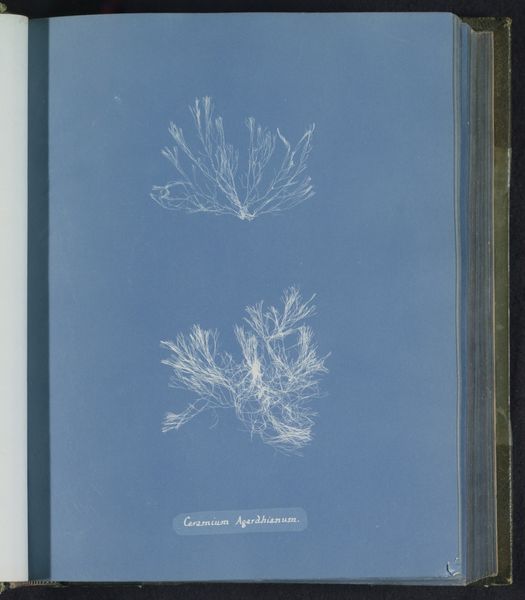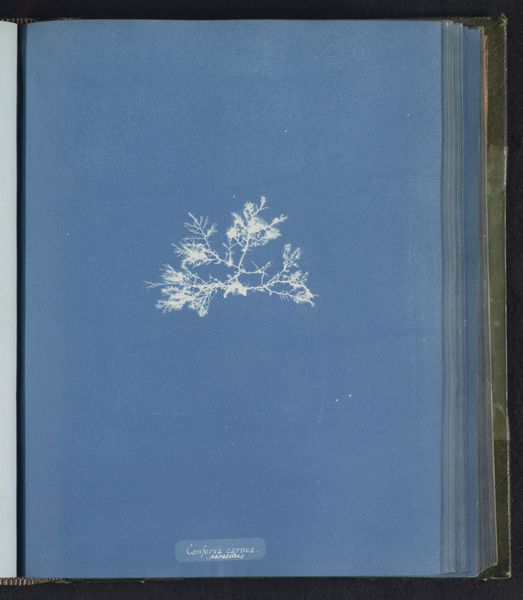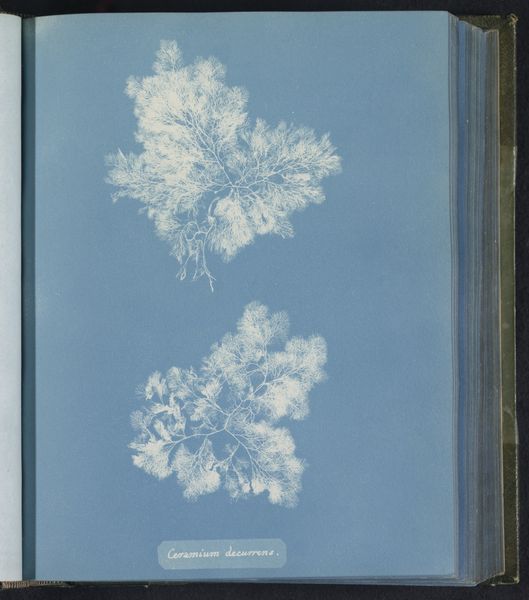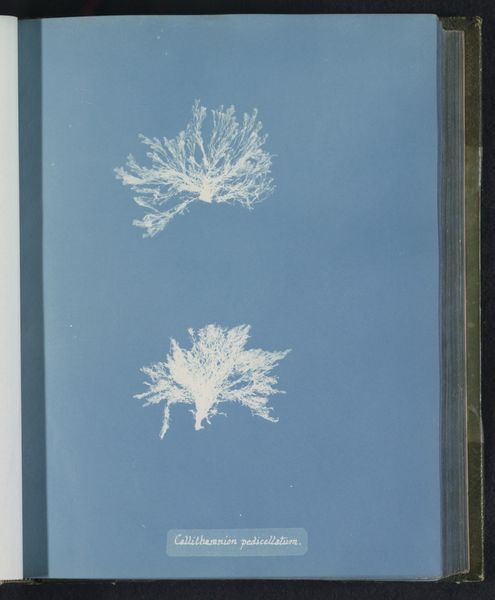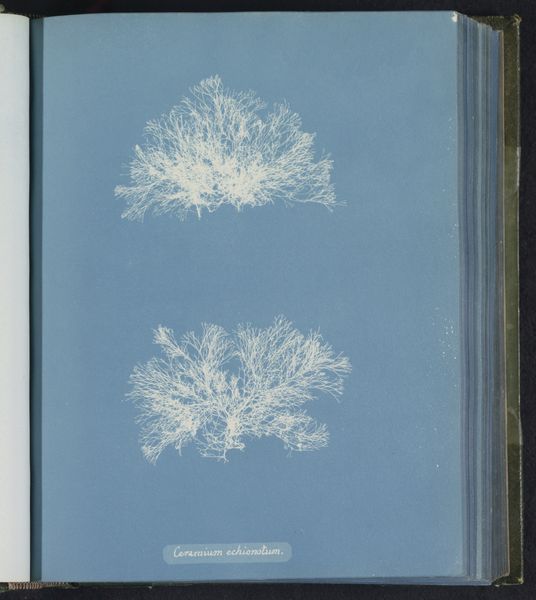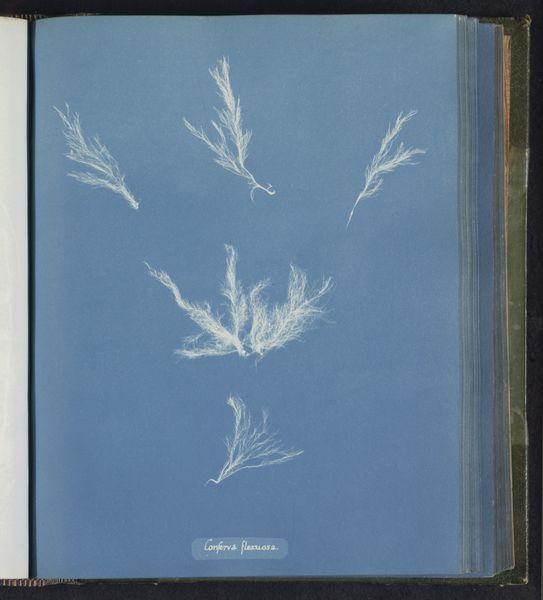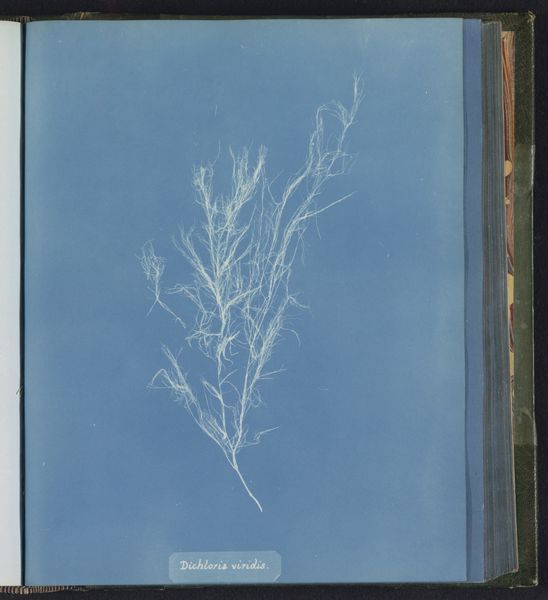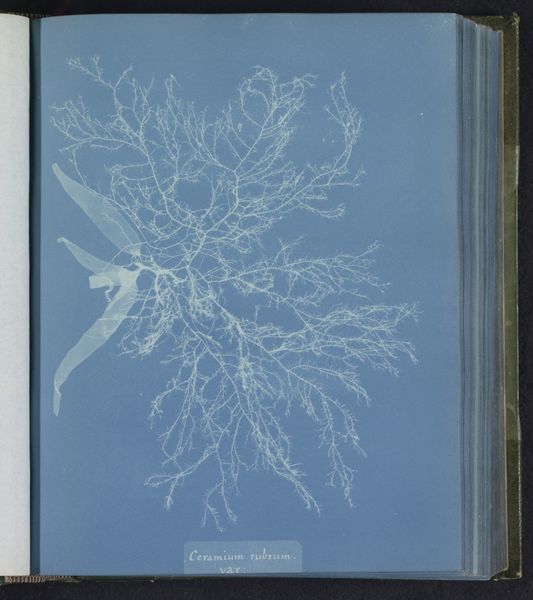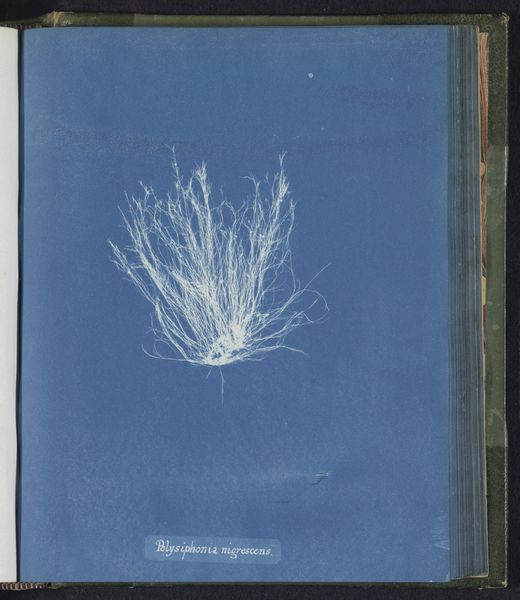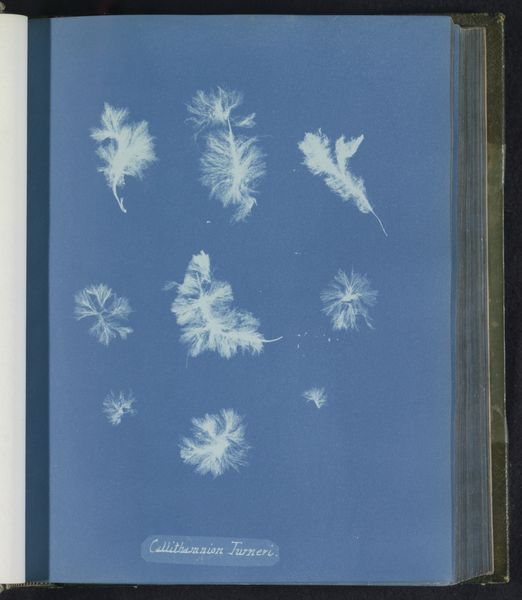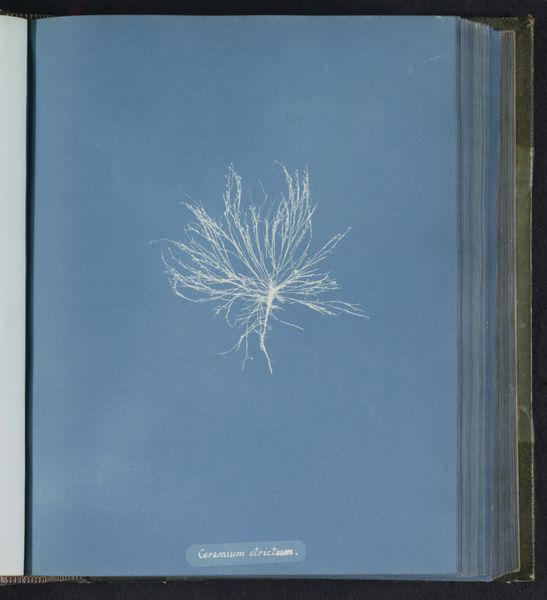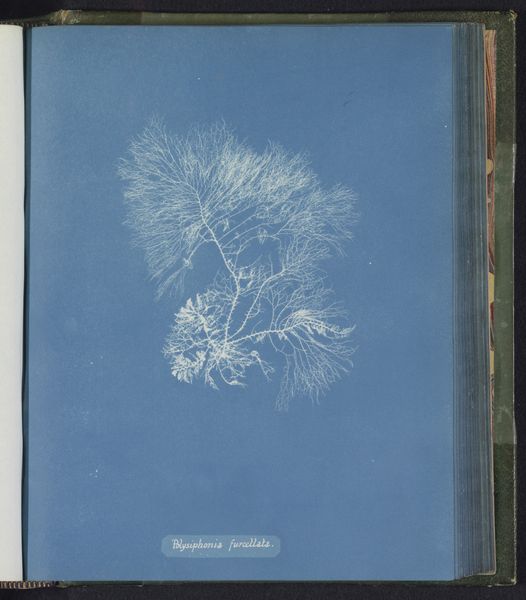
print, cyanotype, photography
#
aged paper
# print
#
personal journal design
#
cyanotype
#
photography
#
personal sketchbook
#
book mockup
#
publication mockup
#
sketchbook drawing
#
watercolour illustration
#
sketchbook art
#
realism
Dimensions: height 250 mm, width 200 mm
Copyright: Rijks Museum: Open Domain
Curator: Look at this cyanotype, dating from around 1843 to 1853. It's titled "Ceramium ciliatum," made by Anna Atkins. Editor: It has the haunting quality of a ghost, delicate and ephemeral against the deep blue. Curator: Atkins, a botanist, used this photographic process to document algae specimens. Her work became a pivotal publication: "Photographs of British Algae: Cyanotype Impressions." Editor: So, these ghostly impressions aren't just pretty pictures but also scientific records? I notice how she includes the label “Ceramium Ciliatum” as part of the image, integrating science directly into her art. Curator: Exactly. Her process demonstrates how photography could be rigorously employed in science. But more than that, I see it pushing against the limitations imposed on women in science at the time. Here, she takes scientific methodology and transforms it through art, making space for herself. Editor: Yes, cyanotypes give her art a spectral, almost ethereal quality that resonates on a deeper level. The cerulean blue becomes a powerful signifier, tying the piece to ideas of knowledge, documentation, and the very origins of photography itself. In doing so, this common seaweed takes on great weight. Curator: What intrigues me is the distribution of these works in book form. Disseminating scientific research through photographs wasn't really accepted yet, yet the sheer act of publishing asserts Atkins’ position within a primarily male scientific discourse. The artistic rendering gave more authority to these natural forms, but from a subjective and interpretive perspective. Editor: So much intention, both scientific and expressive, held within these striking blue tones. You start to look beyond the obvious documentation to her unique and artistic contribution to botany. Curator: Precisely. Viewing it through today’s lens, one appreciates its function not just as scientific record but also as an act of feminist intellectual history. Editor: And its dreamlike quality reminds us that scientific inquiry and art both rely on wonder and imagination.
Comments
No comments
Be the first to comment and join the conversation on the ultimate creative platform.
